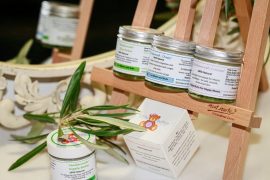If the silicone teat has a wide base (No. 3, pictured below right) with a wide neck bottle, then the baby can only use the tip of the tongue and uses gums at the base of the envisaged silicone nipple, creating a chewing action. The baby cannot seal adequately inside the mouth. Often you will hear the vacuum seal breaking and milk may leak from the corners of the mouth. Sometimes there will be a clicking sound.

The top left image (No. 1) and bottom left image (No. 2) are the same longer teats attached to different bottles. No 2. is not good; one third is placed over a disposable bottle, that shortens the length of the teat. Tongue function will be inadequate, uses tip of tongue and chews at the nipple.
No.1 is longer and has a narrower base. This provides further distance along the upper surface of the tongue, certainly not like the breast, molding to fit to the unique shape inside the baby’s mouth. Baby still has to adapt but the additional length means that more of the tongue muscle is working during drawing and swallowing episodes. By all accounts in my practice it is easier to transition from bottle to breasts if the baby is not gravity feeding.
Simulation: Avoid gravity feeding. Sit the baby up at right angles, tip of teat placed at lips, bottle at right angle. Rest teat on tip of protruding tongue, no milk in the teat. Wait for inward drawing assist gently if you have to. Best not to put the teat in the mouth, baby draws it inward so that lips are at the plastic lid to achieve maximum length, almost to the soft palate in the young baby. When drawn right back, the baby completes several stop-start episodes of stimulating (this is to remember stimulating hormones release at the breast first) before the baby is tilted back gently, keep the same angle of teat in mouth, they both move together, the angle of the bottle is the same, milk comes into the teat, milk flow begins and the baby draw-swallows for a milk flow.
When a reasonable milk flow is achieved, sit the baby up again to stimulate another episode of hormone release to achieve the next milk flow. Repeat this gently until the baby’s cues and body language tells you a level of stomach filling has reached satisfaction. Then sit the baby up again and let nurture for a short time. Rest and digest as for breastfeeding. Nappy change. Then offer the next part of the bottle in exactly the same manner, preferably sitting on the other side of your body to remind the baby about turning over for both breasts. Complete the remainder of the feed to simulate the second breast; hold upright and cuddle for rest and digest simulating the end of the second breast.
By simulating breastfeeding it is easier for the baby to transition to breast-bottle-breast.
The other most important thing is to maintain symmetry at all times on the breast for best oral potential to maintain milk volume. It’s harder on the bottle/teat but is important to maintain as best as possible. Lips to plastic and teat stays central and straight along the upper surface of the tongue.
In over 43 years as a midwife, Dr Robyn Thompson has had the privilege to observe thousands of breastfeeding women and their babies. These years of observation led her to investigate why so many women were experiencing breastfeeding complications such as nipple trauma, breast engorgement and mastitis. Dr Thompson was awarded a PhD for her research and through her passion for helping women avoid these complications, developed what’s now known as ‘The Thompson Method’. You can find more from Dr Thompson on her website – The Thompson Method.










